Ulfberht Swords: A Symbol of Excellence in Medieval Weaponry
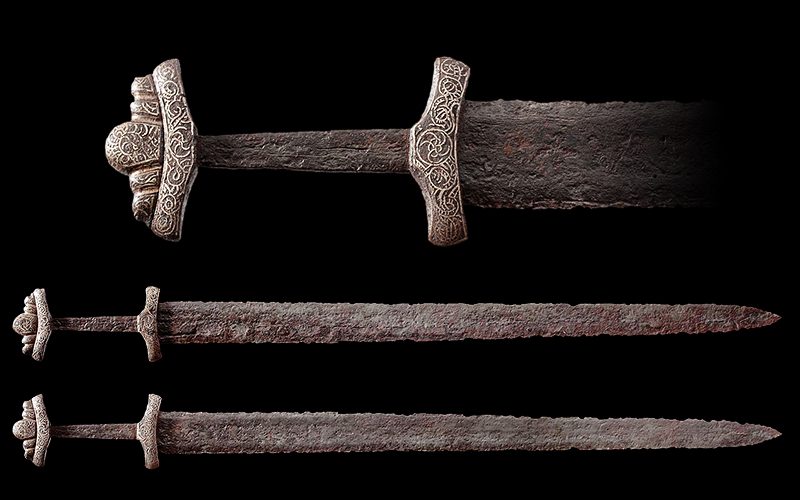
What’s in this article?
Ulfberht swords are among the rarest and most highly sought-after of the thousands of Viking-period weapons recovered in recent history. The letters inlaid on the steel blade that circulated through the 9th and 11th centuries usually read, Ulfberht, identifying them as having been forged.
These swords have a reputation for being secretive and were the most coveted sword among Vikings and their contemporaries. There are several competing theories concerning where these swords came from. We will examine the sword’s characteristics, uses, history, and debates surrounding its origin.
Characteristics of the Ulfberth Sword

Ulfberth Swords are well-known examples of Carolingian or Viking Swords from the Early Middle Ages, with designs heavily influenced by the Roman Spatha or a variation of the Oakeshott type 10. It has an early style of crossguard that is either straight or somewhat constricted toward the blade and a double-edged blade that tapers into a blunt tip. The word Ulfberth etched into its blade is its most striking aesthetic feature.
Blade
The blade of the Ulfberth Sword is straight and double-edged, meaning sharpened on both sides for effective use in slashing motions. Although tapered into a point, the tip isn’t necessarily that sharp and could be found somewhat blunted, as in many other Carolingian and Viking swords. It does have a full-wide fuller throughout the blade to give it a lighter weight.
Ulfberht blades are thought to be made of Crucible Steel rather than “regular” iron-ore steel made by the bloomery process. A novel manufacturing process ensured the purity and excellent quality of this metal. High levels of manganese have also been discovered in them, but the 1.2% carbon content of the blades is by far their most notable material feature. Because of its steel blade, the Ulfberth Swords are known as the most durable and effective.
Inscriptions & Engravings
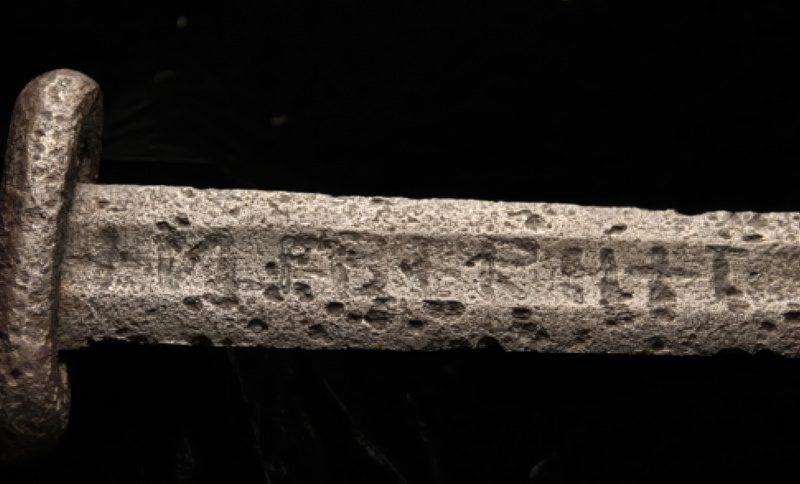
An Ulfberth Sword is a double-bladed, edged weapon with the Ulfberth writing (+VLFBERH+T) inlaid on the side of the blade, which is its most powerful and well-known characteristic. Despite many different theories, today, the Ulfhberth is recognized as the Frankish name of a person or dynasty that inscribed its name or logo on the swords.
The name and writing are ornamented on the blade while the sword is being created. Nobody knows whether Ulfberth was a master blacksmith who made these swords or a guild master. Knowing that Franks had a monopoly of high-quality swords in Europe at the time, branding them with the name would elevate their status and differentiate them from others.
Guard
Ulfberht Swords have early types of guards, unlike the later large crossguards seen throughout Europe. It features a straight or somewhat curved guard toward the blade with a disc shape. It offers good protection from incoming attacks while also serving as a stopping point for the hand and allows for a sturdy and strong grip.
Handle
The handle of the Ulfberth is perfect for one hand, making it a one-handed weapon. It is straight and has the tang of the blade coming through the pommel. The handle length is 4 inches (10 cm) long.
Length & Size
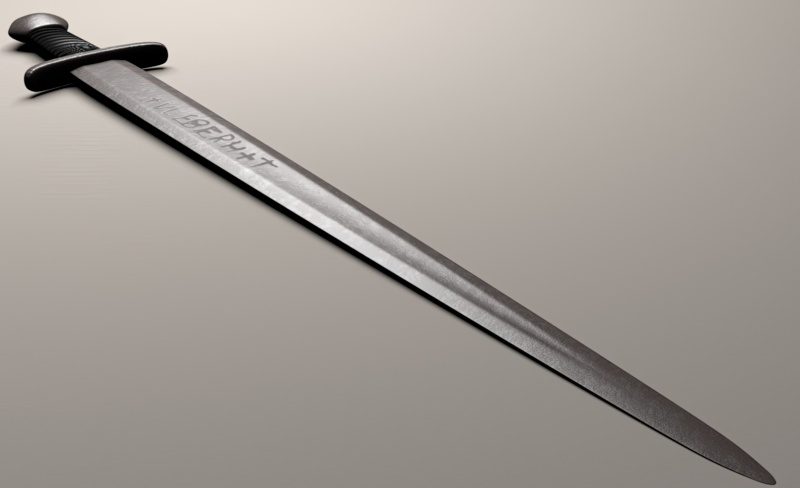
Although there are several findings and variations of the Ulfberth Sword, some counterfeit swords are made from the original ones designed by Ulfberht. The authentic sword’s length is 91 cm (36 inches) with a width of 2 inches (5 cm). This is the ideal size of a one-handed sword that could effectively gash the opponent without the fear of breaking during combat.
Weight
The weight of the famous Ulfberth Swords is around 2.7 lbs (1.2 kg). Its light weight does not take away from its effectiveness against armor or shields, and there was little risk of the weapon snapping.
Uses of the Ulfberht Sword
The Ulfberth Sword is a one-handed weapon that was primarily used with a shield in the other hand, as was common in warfare during its time. It has a double-edged blade made of high-quality steel that is used for hacking and lacerating the enemy while, at the same time, effectively delivering thrusting blows. Despite its broad blade, the Ulfberht Sword is agile and feels light in the user’s hand.
Warfare
The high-quality Ulfberth sword is primarily intended for use in battle. Because of the prevalence of chain mail armor throughout its time, this weapon quickly became the most effective at breaching it without the risk of the blade breaking. It immediately rose to prominence as one of the most formidable weapons of its day because of the added lethality provided by its slightly broader blade.
These weapons were found primarily in the graves and burial sites of Scandinavia or along the routes taken by their warriors. Still, the Ulfberth Swords were also used by many other European lands at the time, such as the British Isles, Ireland, Poland, and Spain.
Symbol of Status and Prestige
Like many other Carolingian Swords before it, the Ulfberth rose fast through the ranks of distinction as its fame spread. Many European and Scandinavian nobles and lords wanted to acquire this sword because of its high status.
This level of prestige and status for the Ulfberth swords was the highest amongst Scandinavians, commonly called Vikings. War plunder and trophies were something that they valued highly and were seen as family heirlooms over time. The swords were buried next to the warriors or given as gifts and offerings passed down from generation to generation.
Trade & Sought After
Only the Franks and the Carolingian Empire created and sold swords of such high quality in the early middle ages. As a result of being able to produce them, the blacksmith Ulfberth helped boost their economy. If they couldn’t be purchased, locations would be plundered or raided repeatedly until someone succeeded in acquiring and finding them. After the Franks banned the sale of these swords to their adversaries (Scandinavians) in the 9th century, because the high-quality weapons could easily be bought and used against their makers, they quickly became sought after.
Because of its widespread use in commerce, several Ulfberht artifacts of varying sorts have been uncovered. These are almost certainly copies made after Ulfberth’s death, clearly distinguished by their inferior quality and the writing of Ulfberth, as many people were illiterate at the time. Some of the warriors using these counterfeits discovered that their weapons didn’t hold up as well in battle, usually moments before their death.
History of the Ulfberth Sword
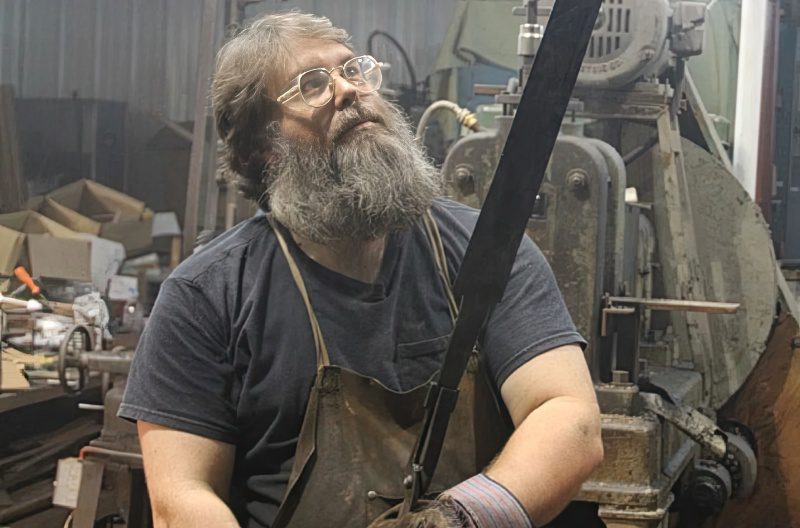
Ulfberth Swords are one of the most mysterious and well-known medieval swords that pre-date the cruciform type of European weapon. It is a highly effective and high-quality weapon made with different sword crafting techniques, starting in the 9th century and ending in the 11th century.
A total of 170 blades were found with the Ulfberth inscription on them. It is not entirely clear what the Ulfberth inscription means, but the Viking theories of the past are likely, untrue. Ulfberth is a name commonly found in the Frankish regions beginning in the 8th century, so we can confidently say that it is the name of a master blacksmith or swordsmith. It’s also quite possibly the name of an organization, a monk in an abbot, a dynasty, or simply a personal name or trademark.
Ulfberth Swords have been found all over Europe crossing from Ireland, Spain, Norway, Scandinavia, and Bulgaria. They have been used by many people and were highly effective in battle but are generally linked with Vikings because of the areas where they have been excavated.
It is said that the method used for creating these swords was ahead of its time as the manufacturing is similar to that seen during the industrial revolution, some 800 years later. The Ulfberth has been accurately remade in the 21st century and described as a tedious undertaking.
Origins
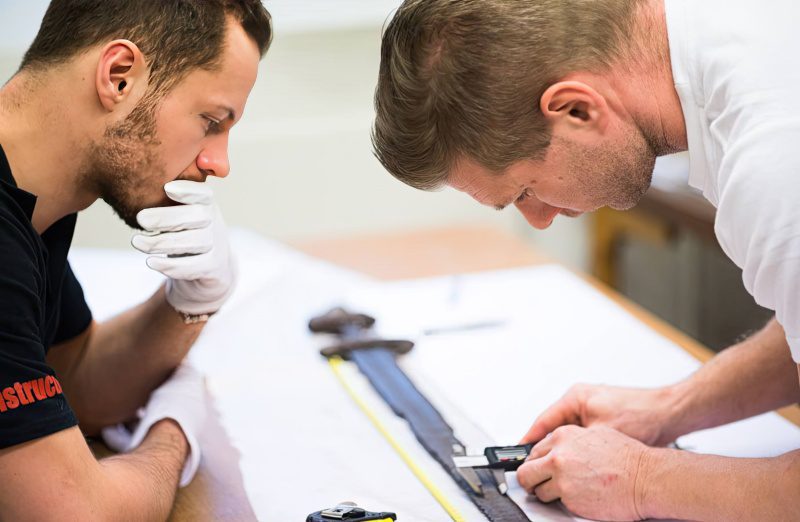
The Ulfberth Swords were created around 850 AD and made in the regions around the Rhine River in modern-day Germany or by the Franks in the medieval period, known as the Viking Era. They were made of high-quality steel, which gave rise to much dispute about their origin. Here we shall mention the most popular ones:
- Norse Gods – with the help of the Norse Gods and the use of volcanic fire, the Vikings were able to create the Ulfberth Swords
- Eastern Origin – the quality and steel for the Ulfberths came from the East and Middle East or the well-known Damascus Steel pattern through the Volga trade route used by the Vikings. Another idea added to this theory is the influence that the Moors (modern-day Spain) would have on the Franks from the south
- Frankish Origin – it is made in the land of the Franks from a method they devised on their own
Most swords in Europe until this era were pattern welded or made by taking a group of iron bars of different qualities and twisting them together while forging, which will make for a quality steel blade. This meant that some iron would be higher in carbon, and for those lower in carbon, hammering it would cause the carbon to develop a hard exterior or steel on the surface without requiring much high heat. The earliest Ulfberth Swords were pattern-welded too.
The secret that Ulfberth and his contemporaries found is that to make a better sword, you must make better steel. They were made in an area that is, by modern standards, still a very popular steel-producing area, such as modern-day Solingen, Germany. These regions have been famous for metalworking since the beginning of the Iron Age. Swords were made in a crucible or a ceramic cup in a furnace with very high temperatures infused with carbon properties.
Likely, hypereutectoid high-carbon steel (found in India’s wootz steel) was produced in Europe and had high manganese content. However, it might have been produced in a bloomery rather than a crucible. In summary, all of our information for the Ulfberth Sword and its origin confirm that it was most likely a Frank innovation.
Were Ulfberth Swords Really Viking Swords?

There is no such thing as a Viking Sword. A real definition of a Viking Sword would be any bladed weapon Vikings, or Scandinavian people could get their hands on, whether in Western, Southern, Eastern Europe, or the Middle East.

The Ulfberth is called a Viking Sword because the swords found in Viking burial sites were primarily in Scandinavia and the regions where they were used and traded. This is directly linked to Pagan rituals of burying their warriors alongside their heirlooms or favorite swords. However, because they were most common in these regions doesn’t imply they weren’t utilized elsewhere in Europe throughout the 11th century.




